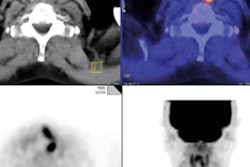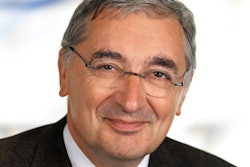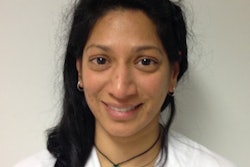
In September, the German Radiological Society (Deutsche Röntgengesellschaft, DRG) and the German Nuclear Medicine Society took a major step toward interdisciplinary cooperation by establishing a working group on hybrid imaging, with a view to combining expertise and innovations from radiology and nuclear medicine in a bid to promote advances in hybrid technology. The group's two chairs, radiologist Dr. Lale Umutlu and nuclear medicine specialist Dr. Ken Herrmann, reveal their goals and plans for the future.
Getting straight to the point, what can hybrid imaging do that other procedures can't?
Herrmann: Hybrid imaging is unique because it combines function and anatomy. It really is a case of "1 + 1 = 3."
 Dr. Lale Umutlu from Essen University Hospital.
Dr. Lale Umutlu from Essen University Hospital.Umutlu: PET/MRI is much more than the sum of its parts. MRI not only shows the pure anatomy but also provides a large amount of data on disease functionality thanks to multiparameter imaging, while PET provides molecular imaging information. These parameters have a lot of potential as noninvasive biomarkers, so we need to research them and assess their relevance to clinical diagnostics.
What exactly led you to the formation of the working group?
Herrmann: Modern hybrid imaging combines skills and innovation from radiology and nuclear medicine. It's not just about the hybrid collection of imaging datasets: It's also about diagnostic, clinical, and research procedures.
Umutlu: We need to work together to drive this modern technology forward and ultimately embed it into clinical routine. We believe this innovative bilateral interdisciplinary group is an opportunity for German radiology and nuclear medicine to cooperate and take the lead. Ken and I initiated the working group and we're very pleased to have high-level support from the presidents of our two professional bodies, Drs. Stefan Schönberg and Bernd Krause.
What are the group's specific plans and goals?
Umutlu: The plans and goals go hand in hand: It is about using our skills, knowledge, and energy to create synergies that will enable us to further develop and optimize hybrid imaging. The goal is to integrate it into the clinical routine and make it cost-effective. And if we're going to transfer the expected benefits of hybrid imaging to clinical patient diagnosis, the cost to the patient is one area where cooperation is particularly important.
The group is a joint project by two professional associations. What do you think are the benefits of this interdisciplinary approach, and what do you expect from each other?
 Dr. Ken Herrmann from Essen University Hospital.
Dr. Ken Herrmann from Essen University Hospital.Herrmann: Here again, it's a case of 1 + 1 = 3. As imaging disciplines, nuclear medicine and radiology have a lot in common. Both associations have morphological, functional, and molecular imaging expertise, some specific to them and some multidisciplinary. Hybrid imaging brings all this together.
Umutlu: I agree. Both disciplines have an interest in developing hybrid imaging, and it makes perfect sense for them to combine their know-how.
How does interdisciplinary cooperation work in practice? In other words, who is responsible for what?
Herrmann: A discipline-based division of responsibilities is exactly what we don't want. We want to tackle and overcome problems and challenges together, and adopt a joint approach to day-to-day tasks like recruiting and informing patients, radiopharmacology applications, and diagnostics.
Where do you go next? What are your plans for the immediate future?
Umutlu: One of the first steps is to sign up members. We'll be holding the first members' meeting on 9 February 2018, the day before the PET/MRI Symposium in Essen. The first symposium, organized by the radiology, nuclear medicine, and medical physics departments of Essen University Hospital, was held this year. It is a great opportunity to establish contact with colleagues with an interest in this field, discuss collaborative research, and the day-to-day challenges of PET/MRI, as well as pick up ideas from nationally and internationally recognized experts.
Herrmann: The working group's first official action will be to publish German guidelines on whole-body PET/MRI scans. From 2018 onward, we'll be drawing up multicenter research plans to obtain new medium-term funding for hybrid imaging, in particular, PET/MRI.
Finally, what is your prognosis for the future of hybrid imaging in research and clinical applications over the coming years?
Herrmann: It's going to be an integral part of inpatient and outpatient care, and a driver of clinical and preclinical imaging research.
Editor's note: This is an edited version of a translation of an interview published in German online by the German Radiological Society (DRG, Deutsche Röntgengesellschaft). Translation by Syntacta Translation & Interpreting. To read the interview in German, click here.



















